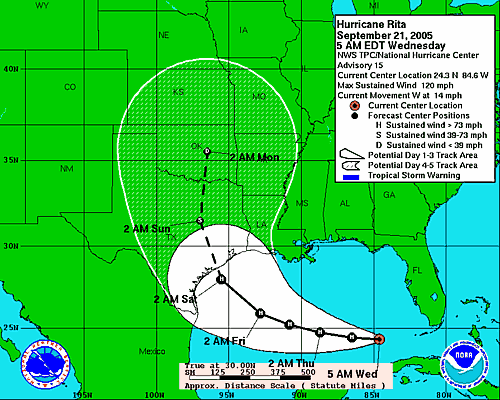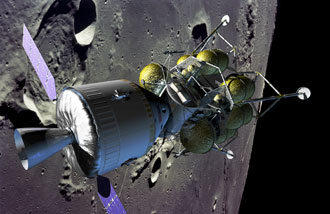Contributed by: filbert Wednesday, September 21 2005 @ 09:55 AM CST
Month: September 2005
Firefox 1.07 is out
Contributed by: filbert Wednesday, September 21 2005 @ 08:32 AM CST
Note to Mozilla: Opera[*2] is now a free browser, too. If Firefox continues to be flaky, I may have to try out Opera.
Comment (0)
Sugar Bowl to Baton Rouge or Atlanta
Contributed by: filbert Wednesday, September 21 2005 @ 08:27 AM CST
The damaged Superdome, its future uncertain, has hosted the game since 1975. The game began to establish its traditions at old Tulane Stadium in 1935.
[*1] http://www.usatoday.com/sports/college/football/bowls/2005-09-20-sugar-bowl_x.htm
Librarians gone wild?
Contributed by: filbert Wednesday, September 21 2005 @ 08:22 AM CST
The five middle-aged library directors and a 32-year-old assistant each put up $200 and posed provocatively, using oversize books to cover what their clothes usually do.
Oh, those naughty, NAUGHTY librarians . . .
Global warming on Mars
Contributed by: filbert Wednesday, September 21 2005 @ 08:11 AM CST
(NASA’s) scientists also say that deposits of frozen carbon dioxide near the planet’s south pole have shrunk for three summers in a row.
They say this is evidence to suggest climate change is in progress.
Must be those pesky robot rover SUV’s we’ve got up there.
Comment (0)
Royals win two, avoid 100th loss again
Contributed by: filbert Wednesday, September 21 2005 @ 08:02 AM CST
The sweep boosted the Royals to 51-99 with 12 games remaining. They must go 7-5 to avoid setting a franchise record for losses in a season.
“All I can say,” manager Buddy Bell said, “is I hope we keep playing the way we’re playing right now. Because we played really well tonight.”
Rita now Category 4
Contributed by: filbert Wednesday, September 21 2005 @ 07:46 AM CST
…SATELLITE SUGGESTS THAT RITA HAS BECOME A CATEGORY FOURHURRICANE…
A TROPICAL STORM WARNING REMAINS IN EFFECT FOR THE FLORIDA KEYS FROMTHE MARQUESAS KEYS WESTWARD TO THE DRY TORTUGAS.
INTERESTS IN THE NORTHWESTERN GULF OF MEXICO SHOULD MONITOR THEPROGRESS OF RITA.
. . .
AT 8 AM EDT…1200Z…THE EYE OF HURRICANE RITA WAS LOCATED NEARLATITUDE 24.4 NORTH…LONGITUDE 85.3 WEST OR ABOUT 195 MILES…WEST OF KEY WEST FLORIDA AND ABOUT 790 MILES EAST-SOUTHEAST OFCORPUS CHRISTI TEXAS.RITA IS MOVING TOWARD THE WEST NEAR 14 MPH AND THIS GENERAL MOTIONIS EXPECTED TO CONTINUE FOR THE NEXT 24 HOURS. THIS MOTION SHOULDBRING THE CENTER OF RITA FARTHER AWAY FROM THE FLORIDA KEYS OVERTHE SOUTHEASTERN GULF OF MEXICO TODAY.
SATELLITE IMAGERY SUGGESTS THAT RITA HAS CONTINUED TO STRENGHTEN ANDMAXIMUM SUSTAINED WINDS HAVE INCREASED TO NEAR 135 MPH WITH HIGHERGUSTS. RITA IS NOW A CATEGORY FOUR HURRICANE ON THE SAFFIR-SIMPSONSCALE. A NOAA PLANE WILL CHECK THE INTENSITY LATER THIS MORNING. SOME ADDITIONAL STRENGTHENING IS POSSIBLE DURING THE NEXT 24 HOURS.

Back to the Moon
Contributed by: filbert Tuesday, September 20 2005 @ 08:56 AM CST
The centerpiece of this system is a new spacecraft designed to carry four astronauts to and from the moon, support up to six crewmembers on future missions to Mars, and deliver crew and supplies to the International Space Station.
The new crew vehicle will be shaped like an Apollo capsule, but it will be three times larger, allowing four astronauts to travel to the moon at a time.
The new spacecraft has solar panels to provide power, and both the capsule and the lunar lander use liquid methane in their engines. Why methane? NASA is thinking ahead, planning for a day when future astronauts can convert Martian atmospheric resources into methane fuel.
The new ship can be reused up to 10 times. After the craft parachutes to dry land (with a splashdown as a backup option), NASA can easily recover it, replace the heat shield and launch it again.
Coupled with the new lunar lander, the system sends twice as many astronauts to the surface as Apollo, and they can stay longer, with the initial missions lasting four to seven days. And while Apollo was limited to landings along the moon’s equator, the new ship carries enough propellant to land anywhere on the moon’s surface.
Once a lunar outpost is established, crews could remain on the lunar surface for up to six months. The spacecraft can also operate without a crew in lunar orbit, eliminating the need for one astronaut to stay behind while others explore the surface.
 Image credit: NASA/John Frassanito and Associates.
Image credit: NASA/John Frassanito and Associates.
